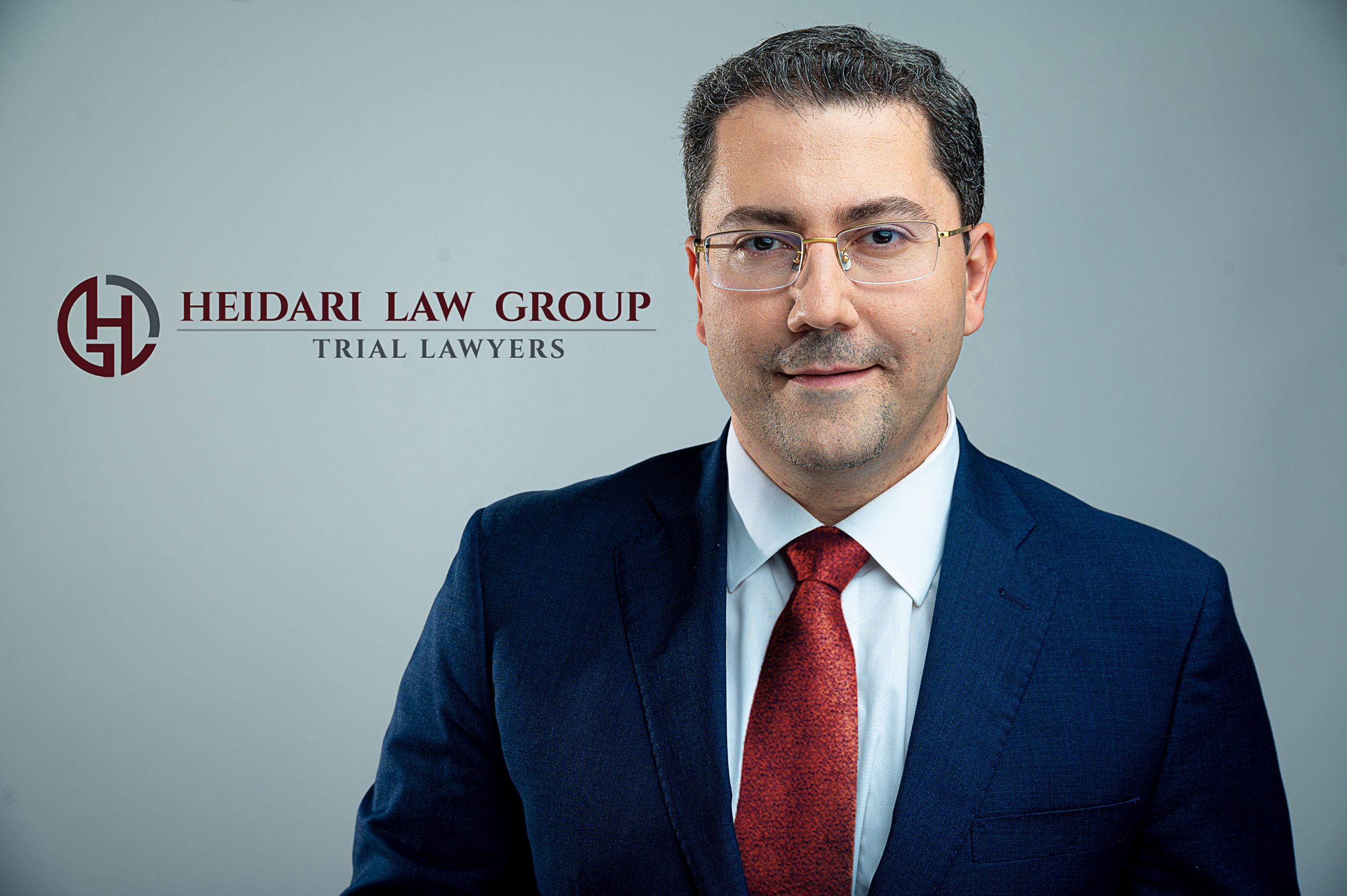$500,000
Premises Liability
$1.4 Million
Brain Injury
$3.3 Million
Motorcycle Accident
$2.0 Million
Car accident
$1.0 Million
Ride Share Accident
$1.1 Million
Motor Vehicle Accident
$110,000
Truck Accident
$500,000
Trip and Fall Accident
$1.0 Million
Medical Malpractice
$250,000
Airline Accident
Case Results
$3.3 Million
Motorcycle Accident
$2.0 Million
Car accident
$1.4 Million
Brain Injury
$1.1 Million
Motor Vehicle Accident
Multiple parties can be involved in the liability for a big rig accident. First off, there’s the truck driver. Were they distracted? Speeding? Perhaps they were driving under the influence? If a driver’s negligence caused the accident, they may bear significant responsibility.
But wait. What about the trucking company? They play a crucial role too. If the driver worked within the scope of their employment when the accident occurred, the company might be held liable. This can happen if the company fails to train the driver correctly, neglects to maintain the vehicle, or even pressures the driver to meet unrealistic deadlines. It’s not uncommon for trucking firms to prioritize profit over safety. And that’s where things get tricky.
Let’s consider another scenario. Maybe the vehicle itself was at fault. Was there a mechanical failure? The manufacturer or maintenance provider could be liable if the truck’s brakes failed because maintenance was neglected. Federal and state trucking regulations mandate regular inspections and maintenance. If those rules weren’t followed, that could lead to liability, too.
Then there’s the issue of third-party involvement. What if another driver caused the accident? Perhaps a passenger car cut off the big rig, leading to a collision. In that case, the other driver may bear responsibility. Or maybe a road hazard—like debris or poor signage—caused the incident. Local government entities could be liable if they failed to maintain the road properly.
So, multiple factors come into play. But how do you navigate this complex web of liability? Here are a few key points to consider:
- Document everything. Take photos, gather witness statements, and write down details immediately.
- Seeking legal assistance is not just a step, it’s a lifeline. An experienced attorney can help you identify responsible parties and build your case, providing the support and guidance you need in this complex situation.
- Understanding the regulations is not just a suggestion, it’s a powerful tool. Familiarize yourself with federal and state trucking regulations. Knowing these can bolster your claim and give you a sense of control in this complex situation.
Acting quickly is not just a recommendation, it’s a necessity. Evidence can disappear. Witnesses can forget. A strong claim requires prompt action. At Heidari Law Group, we understand the intricacies of these cases. We’re here to help you figure out who’s responsible and how to pursue justice, empowering you to take control of the situation.
Understanding Liability in Big Rig Accidents
Liability in significant rig accidents can feel overwhelming. It’s not just about who hit whom. It’s about understanding a web of responsibilities. Every party involved has a role to play. But how do you untangle it all?
First, let’s talk about the truck driver. They’re often the first person you think of. If they were texting, speeding, or driving recklessly, their actions could be a clear negligence case. But hold on. What if the driver was exhausted? Maybe they were under pressure from the trucking company to meet tight deadlines. That can complicate matters. Did you know that overworked drivers are more likely to make mistakes? That’s critical information when assessing liability.
Now, consider the trucking company. Are they to blame if the driver made a mistake? Yes, in many cases. They could share the blame if they failed to provide adequate training or proper rest breaks. Often, these companies prioritize profits over safety. It’s a harsh reality. They might push drivers to exceed legal limits, leading to dangerous situations. If this happens, the company can be held liable, even if the driver was at fault.
Then, we have the vehicle itself. Was it well-maintained? If not, that’s another piece of the puzzle. Mechanical failures are common in significant rig accidents. A blown tire or faulty brakes can lead to disastrous outcomes. In these instances, you might look at the truck manufacturer or the maintenance provider. They could be partially responsible for the accident if they didn’t uphold their responsibilities, such as conducting regular inspections as mandated by federal and state trucking regulations. If those rules weren’t followed, it opens the door for liability claims against the parties responsible for the upkeep.
Let’s not forget about third parties. They can complicate the situation even further. For instance, what if another driver cuts off the big rig? If that other driver was at fault, they could be liable. Picture this: a small car swerves in front of a truck causing a collision. The damages could fall squarely on that driver’s shoulders. But the situation may not be that simple. Sometimes, road conditions play a role—maybe there was debris on the road or poor signage. If a local government failed to address these hazards, it could share liability too.
So many factors can affect liability in a big-rig accident, and it’s not always clear-cut. That’s why it’s crucial to gather evidence. Documenting the scene, taking photos, and speaking with witnesses can make a significant difference. This information can help establish who was responsible and why.
Legal Implications of Big Rig Accidents
Significant rig accidents can have serious legal repercussions, and understanding these implications is crucial. After all, the aftermath of an accident doesn’t just involve physical injuries; it can also include navigating a maze of legalities.
First, let’s talk about the immediate legal aftermath. If you’re involved in a big rig accident, you might first face the claims process. Insurance companies often take a hard stance. They aim to minimize payouts. It’s all about the bottom line for them. This can leave accident victims feeling overwhelmed and frustrated. Did you know that insurance adjusters are trained to look for ways to deny or reduce claims? That’s why having an experienced attorney, who can negotiate with the insurance company on your behalf and ensure you receive fair compensation, can be a game-changer.
But what about liability and fault? As mentioned earlier, it’s not just about the driver. With big rigs, the trucking company can be held accountable too. They are required to follow federal and state trucking regulations. These regulations are in place to ensure safety on the roads. A company violating these rules—like not conducting proper driver background checks or ignoring maintenance schedules—could face legal consequences. This is known as vicarious liability. If the driver acted within their scope of employment, the trucking company may be held responsible for their actions.
Then there’s the issue of negligence. Proving negligence is key in these cases. You must show that the driver or the trucking company failed to act as a reasonable person would under similar circumstances. For example, if a driver is found operating a vehicle while fatigued, that can be a strong negligence case. They had a responsibility to ensure they were fit to drive. So, what happens if negligence is proven? The consequences can range from paying medical bills to compensating for lost wages. It can get complicated quickly.
Now, let’s not forget about punitive damages. In certain egregious cases, courts may award punitive damages. This punishes the at-fault party and deters others from similar conduct. For instance, if a trucking company is found to have routinely ignored safety regulations, the court may impose punitive damages. This isn’t just about compensating the victim; it’s about sending a message that such behavior won’t be tolerated.
And what about the role of regulations? Federal and state trucking regulations play a significant part in these accidents. They dictate everything from driver hours to vehicle maintenance requirements. The responsible parties can face fines and penalties if these regulations are not followed. More importantly, these violations can strengthen a victim’s case. Evidence of non-compliance can be compelling in court.
So, what steps should you take if you find yourself in this unfortunate situation? Documentation is critical. Gather as much evidence as possible: photos, witness statements, and police reports. This will all serve as crucial pieces of the puzzle in establishing liability.
Determining Fault in Big Rig Accidents
Determining fault can feel like piecing together a complex puzzle regarding significant rig accidents. Each incident is unique, but the stakes are always high. So, how do you figure out who’s really at fault? Let’s break it down.
First, consider the role of the truck driver. Were they following the rules of the road? Were they distracted, perhaps looking at their phone instead of the traffic ahead? It’s all too common. Distracted driving can lead to catastrophic outcomes. Think about it: a moment’s inattention can change everything. If the driver was negligent, their actions may play a significant role in establishing fault.
But we can’t stop there. What about the trucking company? They’re often just as responsible. Did they ensure their drivers were trained correctly? Were they adhering to federal and state trucking regulations? These regulations exist for a reason: to ensure safety on the road. If a trucking company neglected these duties, they could share liability. Picture this: a trucking company that pressures its drivers to meet tight deadlines may contribute to fatigue. That’s a ticking time bomb for accidents.
Next, think about vehicle maintenance. Was the truck well-maintained? Regular inspections are mandatory under federal regulations. If a truck’s brakes failed due to lack of maintenance, liability could extend beyond the driver to the maintenance provider or manufacturer. Imagine a car with a mechanical failure right before an accident. If that failure was due to negligence in upkeep, they might be held responsible. It’s a chain reaction: one failure leads to another.
Now, let’s consider the conditions of the road. Were there hazards that could have contributed to the accident? Poor signage or debris on the roadway can lead to disastrous consequences. Local governments are responsible for maintaining safe roads. If they neglected this duty, they could also be liable. It’s not just about the vehicles; it’s about the environment in which they operate.
But wait, there’s more. What if another driver was involved? They could contribute to the blame, too. Imagine this: a car suddenly merges in front of a big rig, causing a collision. That other driver’s actions may have been reckless. In such cases, the focus shifts, and liability can be shared. It’s a multifaceted issue, and every detail counts.

Sam Ryan Heidari
Sam Heidari is the founding principal of Heidari Law Group, a law firm specializing in personal injury, wrongful death, and employment law. Sam Heidari has been practicing law for over 11 years and handles a wide range of cases including car accidents, wrongful death, employment discrimination, and product liability. The Heidari Law Group legal firm is known for its comprehensive approach, handling cases from initial consultation through to final judgment. Sam Heidari is dedicated to community involvement and advocacy for civil liberties.
Contact Us
24/7 Free Case Evaluation
NO FEE UNLESS WE WIN
Los Angeles Office
3530 Wilshire Blvd. Suite 710 Los Angeles, CA 90010 Tel: 213-884-4881Fax: 213-884-4588
info@HeidariLawGroup.comIrvine Office
17875 Von Karman Ave. Suite 150 & 250 Irvine, CA 92614 Tel: 949-239-1020Fax: 949-239-1021
info@HeidariLawGroup.comSacramento Office
180 Promenade Cir Ste 300 Sacramento, CA 95834 Tel: 916-461-1818Fax: 916-461-9797
info@HeidariLawGroup.comBakersfield Office
3501 Mall View Rd Suite 105 Bakersfield, CA 93306 Tel: 661-409-0000Fax: 916-461-9797
info@HeidariLawGroup.comLas Vegas Office
611 S 6th Street Las Vegas, NV 89101 Tel: 702-722-1500Fax: 702-722-1600
info@HeidariLawGroup.com
